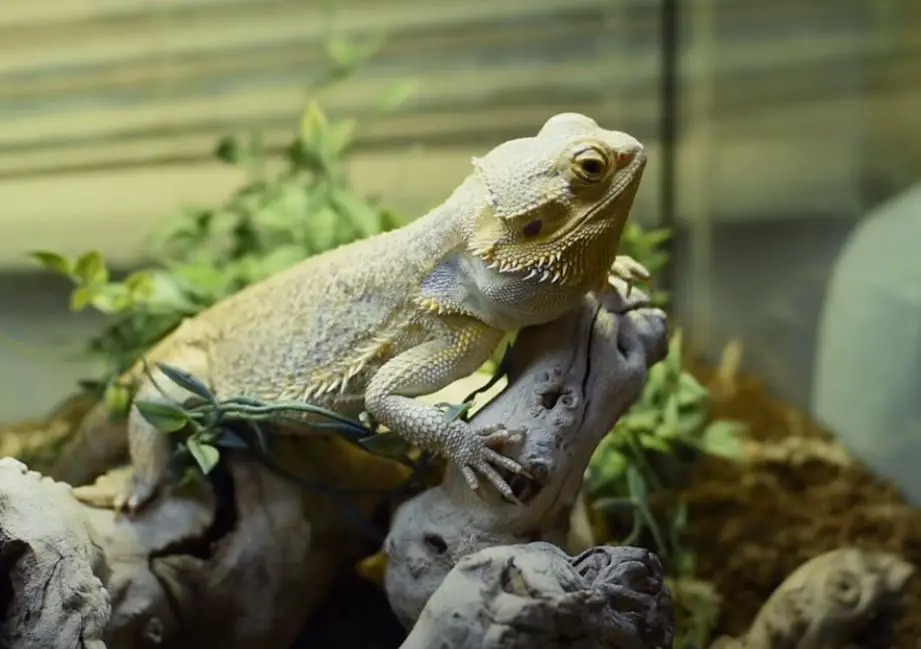What are some safe plants for bearded dragons?
Before we talk about those, just imagine that you are living in a large room without color, furniture, or any decoration whatsoever. How boring your life will be?
By contrast, a more colorful and stimulating room will inspire you and give you a lot of happiness, creation, and motivation in your life.
Similarly, this would be true in the case of your beloved bearded dragon.
A bearded dragon’s life would be extremely boring and lifeless if they live in a sad, boring enclosure.
So, what is the good news about all of this?
You can find a wide range of low-priced plant options available (both real and fake) that you can surround your bearded dragon with.
The plants will not only give your bearded dragon’s home a diversity of personalities but also make them happier and more interested in living there!
But you need to ensure that you only put safe plants for bearded dragons to avoid any problems!
Explore these safe plants for bearded dragons to give your beardie a dreamy life!
Related Posts:
- Why My Bearded Dragon Won’t Eat
- How Do Bearded Dragons Drink Water?
- Why Is My Beardie Bobbing His Head?
- Beardie Sleeping All Day
- Why Is My Beardie’s Beard Black?
- Why Is My Beardie Breathing Heavy?
Are Live Plants Safe for Bearded Dragons?
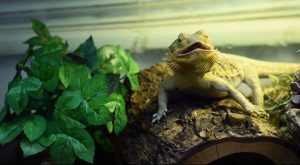
Of course, live plants could be a great choice for your bearded dragon’s enclosure.
However, you should think about a lot of things to avoid problems.
For example, you’ll want to answer the following questions for yourself:
- Do you have any knowledge about caring for houseplants?
- Are you willing to spend extra time and energy and want to care for some live plants besides your pet?
- Will you accept some small potentials that the plants will harm your pet?
After that, you should know that the more complex your lizard’s habitat is, the more risks there would be.
Therefore, this is also the reason why most breeders who are very good at keeping their bearded dragons maintain very simple habitats.
Nonetheless, increasing the complexity of your pet’s habitat will bring a lot of benefits. Adding things like climbing branches, cage furniture, and plants will more likely improve your pet’s quality of life!
Also, plants would play an important role in encouraging you to spend more time taking care of your pet and its habitat.
So, as a keeper, you should consider the advantages and disadvantages of having live plants on behalf of your pet before trying to select the best plants for your pet’s enclosure.
What Safe Live Plants to Put in a Bearded Dragon Vivarium?
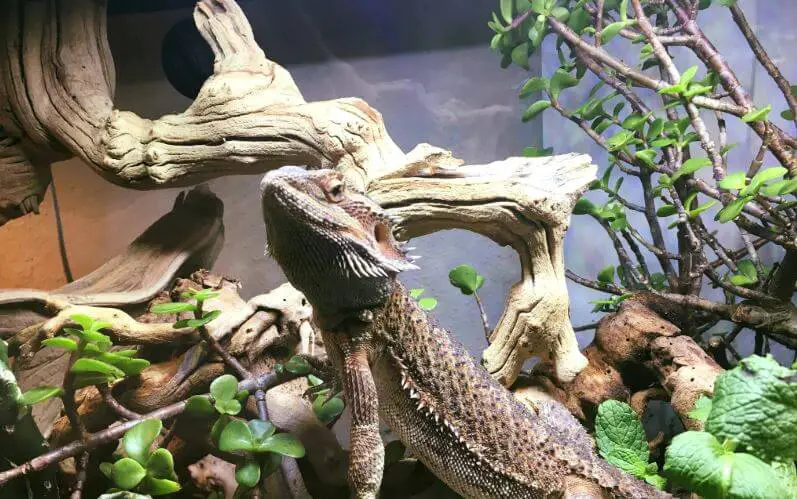
Before adding live plants to the vivarium, you should do some research on the plants very carefully to ensure that they’re not harmless to your pet.
Honestly, we suggest that you shouldn’t use live plants if you are not sure about them due to some reason.
Firstly, the humidity could be raised to unsafe levels if you constantly water your live plant.
And a problem may arise when your pet would probably try to eat plants in its tank, which could result in disastrous consequences if the plant is poisonous to them.
When trying to mimic your bearded dragon’s natural habitat within its vivarium, you should opt for desert scenery rather than a tropical rainforest look as beardie originally lives in the Australian plains.
List of Safe Plants for Bearded Dragons
|
|
What Are the Poisonous Plants for Bearded Dragons?
The following plants may represent a threat to your beardie as they are harmful to some animals, and they may, too.
However, some are toxic to some animals but safe for others.
Therefore, you had better be cautious when adding some kind of live plants to the enclosure.
In addition, while some plants only lead to minor symptoms, such as intestinal disturbances, others may result in death in animals eating them.
Further, some plants would be toxic in other ways.
For example, many plants have safe fruits but their leaves or stalks may be fatal to the animals when eating.
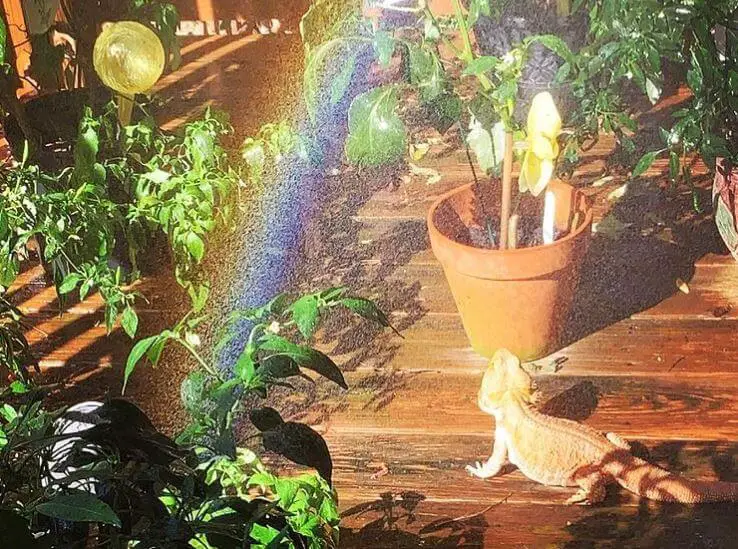
List of Potentially Poisonous Plants for Bearded Dragons
Column 1
|
Column 2
|
Related Posts:
- Can Beardies Eat Rosemary?
- Can Beardies Eat Brussel Sprouts?
- Do Beardies Eat Peas?
- Can Beardies Eat Squash?
- Can Beardies Eat Pears?
Are Fake Plants Safe for Bearded Dragons?
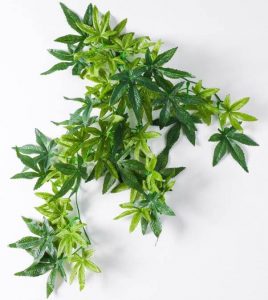
Instead of using real plants, artificial plants may be a great alternative due to three benefits:
- Firstly, a hiding place would be created when grouping them together.
- Secondly, fake plants with strong stems may allow bearded dragons to climb on them.
- Thirdly, their attractive look will make the enclosure more colorful and enjoyable.
To maintain these plants as well as to diminish the risk of fire, you should keep them away from heat.
Before making a decision on getting fake plants for your bearded dragon, you should make sure that it is not easy to pull them apart by your pet and that they are easy to be cleaned.
How to Install Safe Live Plants Into the Bearded Dragon Tank?
After considering the plants to be added to your dragon’s habitat, you will have to decide the proper way to install them.
Below are two basic options for arid habitats that we mentioned.
1. Installing Plants Directly in the Tank
Inserting plants right in the substrate of your pet’s habitat may bring some stunning outcomes to your pet’s enclosure, but this method is quite challenging.
This is because you have to choose a suitable substrate and safe plants for bearded dragons.
It will also take you more time and effort to make habitat maintenance.
However, if you are successful at completing the process, the results would be very visually gorgeous.
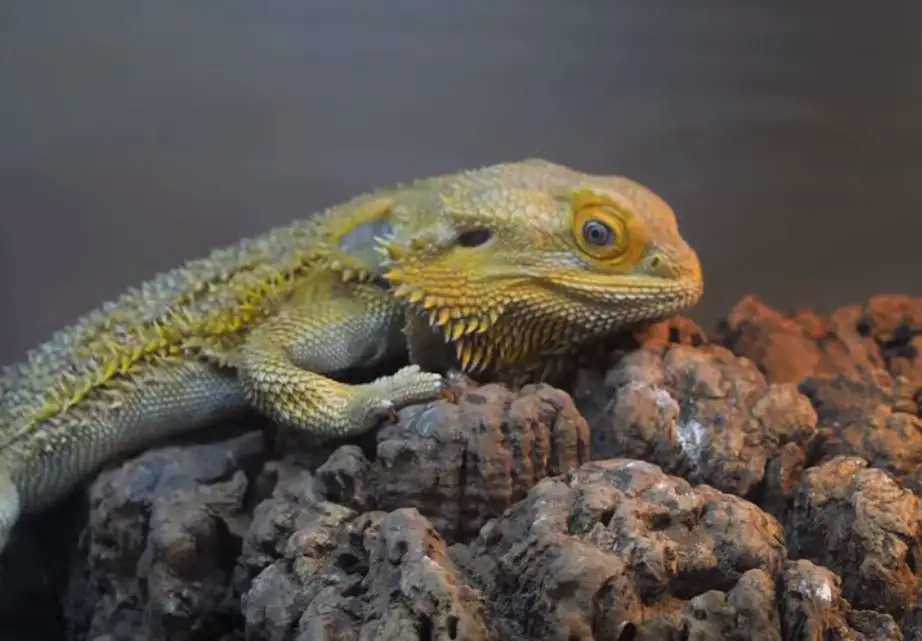
2. Planting in Pots
Another much easier way to add plants to your enclosure is by planting them inside typical plant pots and adding them to the habitat.
To obscure or hide pots, you can use cork bark, rocks, and other decorative items and use pots that will provide enough space for the plant’s roots and still fit well in the habitat.
Leaving plants inside separate pots will allow you to make habitat maintenance more easily as well as to rotate them periodically.
In addition, you can just move them outside to get light for a few weeks and place them into the terrarium.
How to Take Care of Safe Plants for Bearded Dragons?
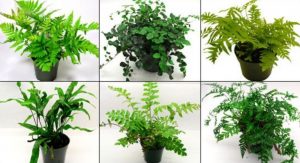
Of course, fake trees will not take you much effort to support.
However, you should spend time taking them out of the cage to clean them regularly as some plants made of plastic or silk are more likely to get dirty and bad smell after a long period of time, which can cause illness to the pet.
In addition, you also need to replace plastic or fabric plants with new ones when they may fade over time.
On the other hand, you may spend more time taking care of natural plants.
Besides watering the plants regularly, you also need to pick up wilted leaves, keep them away from the heating lights and even prune them in case they grow so quickly and take up too much space in the cage.
Finally, we recommend that you should extract some species to save a lot of money by buying new trees to replace dead ones.
Frequently Asked Questions About Safe Plants for Bearded Dragons
1. Is Cactus a Safe Plant for a Bearded Dragon’s Habitat?
There are a lot of controversies relating to this question as some experts assume that certain types of cacti will do well in bearded dragon habitats. Others argue that your dragon is more likely to hurt himself or herself with the spikes.
We think that you can easily find a wide range of safer plants to satisfy instead of using a cactus.
Read More:
- Can Beardies Eat Dill?
- Can Beardies Eat Radish Greens?
- Do Beardies Eat Honeydew Melon?
- Can Beardies Eat Chard?
- Can Beardies Get High?
2. What Is Safe Wood for Bearded Dragon Habitats?

Wood may be a good option for your dragon’s habitat.
In case you would like to add a piece of wood from outside into the habitat, you have to bake it at 320 degrees for at least 30 minutes to kill any parasites and insects.
Conclusion
Now you know the safe plants for bearded dragons as well as the ones that you should avoid.
Among a wide range of safe plants for bearded dragons such as succulents, a piece of wood, and so on, you will have your own best options for your bearded dragon’s habitat.
But you also should keep an eye on your bearded dragon as well as the plants to ensure that it is not doing more harm than good.
Bearded dragons that are curious can consume the wrong things by accident, which results in diarrhea and even more serious issues as well.
Key points for selecting safe plants for your bearded dragon:
Adding live plants to your bearded dragon’s enclosure not only enhances its aesthetic appeal but also provides environmental enrichment. However, it’s crucial to ensure that the plants you choose are safe and non-toxic. Here are some safe plant options for bearded dragon habitats:
1. Non-Toxic Plants:
- Select plants that are known to be non-toxic to reptiles, particularly bearded dragons.
2. Aloe Vera (Aloe barbadensis miller):
- Aloe vera is safe and can be beneficial for your bearded dragon, as it has potential healing properties and can provide shade.
3. Hibiscus (Hibiscus spp.):
- Hibiscus plants are safe for bearded dragons and can add a touch of color to the enclosure.
4. Spider Plant (Chlorophytum comosum):
- Spider plants are non-toxic and easy to care for. They add a lush look to the habitat.
5. Bamboo (Bambusoideae spp.):
- Bamboo is safe and can be used to create a natural setting in your dragon’s enclosure.
6. Rose (Rosa spp.):
- Roses are non-toxic and can provide variety and fragrance to the habitat.
7. Mulberry (Morus spp.):
- Mulberry plants are safe and can serve as a food source for your bearded dragon.
8. Ficus (Ficus spp.):
- Some ficus species are safe for bearded dragons, but ensure you choose non-toxic varieties.
9. Pansy (Viola spp.):
- Pansies are safe and add color to the enclosure.
10. Safe Herbs: – Certain herbs like basil, oregano, and mint can be safely incorporated into the habitat.
11. Organic and Untreated: – When using plants from outside sources, make sure they are organic and free from pesticides or chemicals.
12. Proper Plant Placement: – Consider the growth habits and size of the plants. Ensure they won’t overcrowd the enclosure or pose any hazards.
13. Plant Care: – Maintain the plants regularly by pruning and removing any dead or wilted parts.
14. Watch for Bearded Dragon Behavior: – Observe your dragon’s interaction with the plants. Some dragons may be curious and nibble on certain vegetation.
15. Provide a Safe Substrate: – Use a substrate that’s safe for both your dragon and the plants, such as organic soil or reptile-safe coconut coir.
16. Artificial Plants as an Option: – If you’re concerned about your dragon consuming live plants, you can opt for artificial plant decorations.
17. Monitor for Signs of Toxicity: – Keep an eye on your bearded dragon’s health and behavior. If you notice any signs of distress or toxicity, remove the plants immediately.
18. Consult with a Herpetologist or Veterinarian: – For a comprehensive list of safe plants and expert guidance, consult with a herpetologist or reptile veterinarian.
In summary, enhancing your bearded dragon’s enclosure with safe live plants can provide visual interest and environmental enrichment. Ensure you choose non-toxic plant varieties, monitor your dragon’s behavior, and maintain the plants properly. Safe plants contribute to a healthier and more engaging habitat for your bearded dragon.
Further Reading:
- Carolina Custom Cages Terrarium Review
- 8 Best Basking Rocks for Beardie: What Is the Best Choice?
- 10 Best Thermometers for Beardie: How to Choose the Best One?
- 5 Best Beardie Lighting Setups for Beardie Lovers
- 9 Best Heat Lamps for Beardie: Natural Habitat Provided
- How to Tell If Your Beardie Is Happy?
- 30+ Beardie Body Language
- 33+ Tips for Baby Beardie Diet

